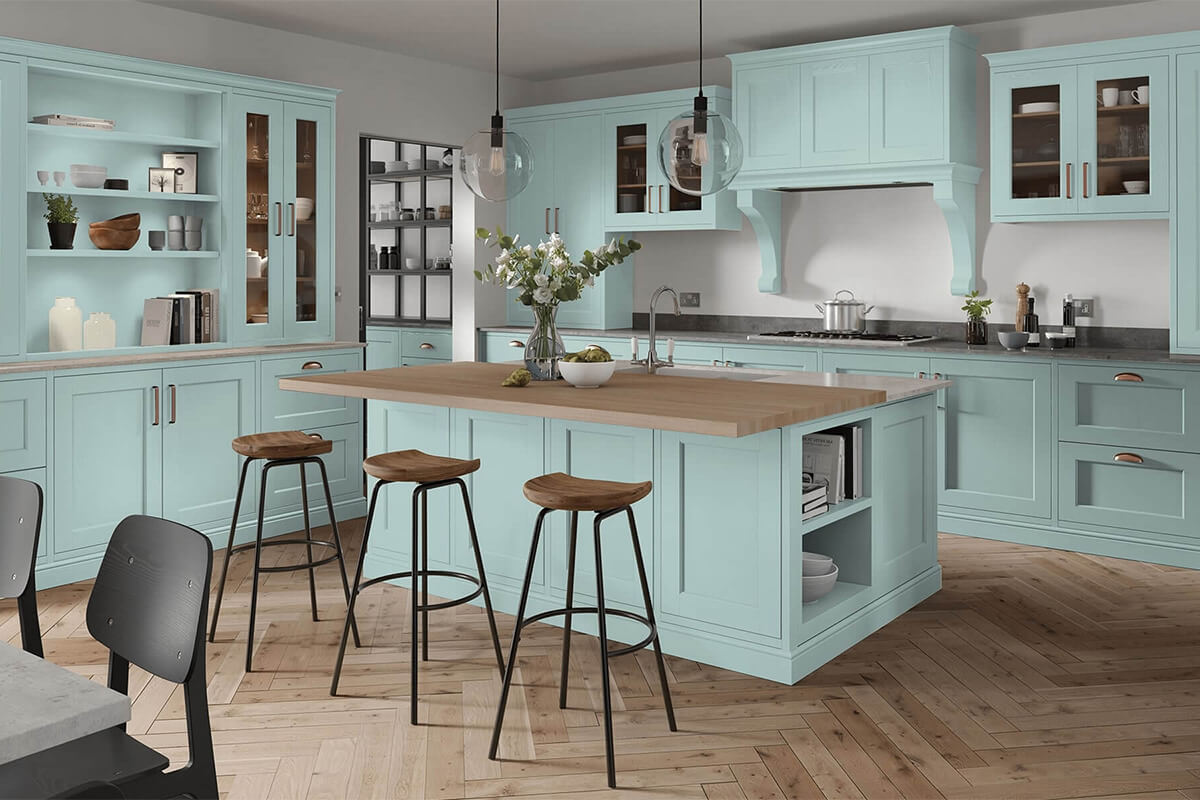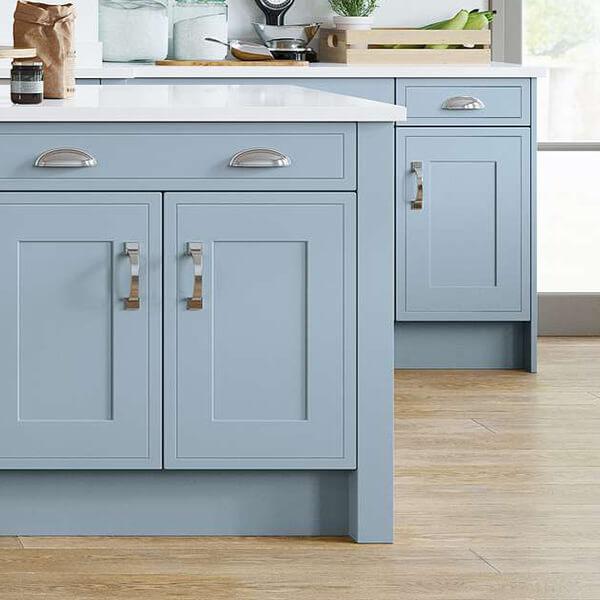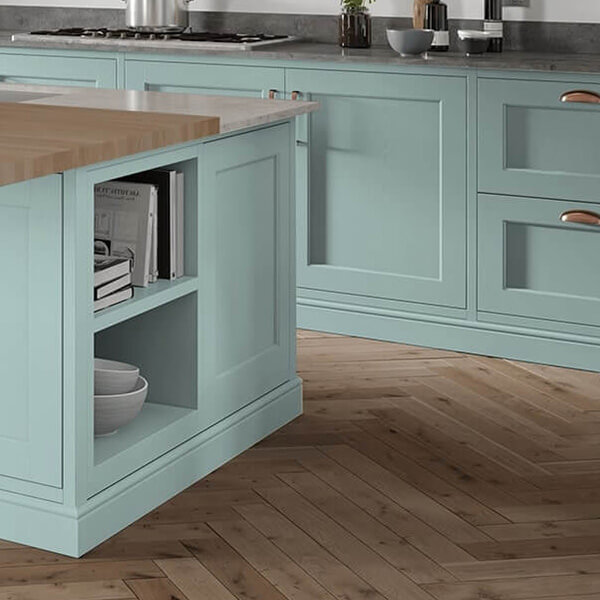Kitchen Plinth Sizes and Styles Explained
Discover the ins and outs of kitchen plinths, from their standard sizes to the styles available, and learn how they contribute to the overall aesthetic and functionality of your kitchen.

In the quest for a flawless kitchen design, every detail, no matter how small, plays a pivotal role.
Among these details, kitchen plinths often go unnoticed, yet they are essential in achieving a polished look and maintaining the kitchen’s integrity.
Plinths, also known as kickboards, are installed to conceal the area underneath the kitchen units, giving a finished appearance from floor to ceiling.
Understanding Plinth Sizes
The standard height for a kitchen plinth is 150mm. This uniform size allows kitchen installers to operate with ease and ensures consistency in design.
However, due to varying floor levels, adjustments may be needed. Cabinet legs are adjustable, ranging from 140mm to 160mm, allowing for a perfect alignment with the plinth.
Additionally, the length of plinths can range between 2.4m and 3m, depending on the kitchen style chosen, offering ample flexibility for different kitchen layouts and designs.
Cultivate elegance in every detail; with the right kitchen plinth, turn the ordinary into extraordinary and make your kitchen a harmonious masterpiece!
Adapting to Different Floor Levels
Unlevelled flooring can result in visible gaps beneath the plinth. However, solutions exist to combat this.
Adjustable cabinet legs and various plinth lengths enable precise fitting, while sealing the plinth prevents moisture or grime from penetrating underneath the kitchen units.
Larger Plinth Requirements
Occasionally, a larger sized plinth is essential. In such instances, a tall end panel, cut to the desired size, serves as an effective solution.
Proper installation and consideration of various factors, including flooring and plinth height, are vital for the integrity of the kitchen.
Top Tips for Choosing Plinths
- Consistency is Key: Ensure the plinth matches the chosen door style for a harmonious look.
- Adjust to Perfection: Utilise adjustable cabinet legs for the perfect fit.
- Seal the Deal: Seal the plinths to avoid moisture and grime accumulation.
Styles of Plinth
At Better Kitchens, we offer two distinct styles of plinth: Standard and Torus Profiled.
These options ensure you can find a style that complements your kitchen design, enhancing its aesthetic appeal.
Standard Style
A flat plinth sitting under the cabinet line by approximately 50mm.
Torus Profiled Plinth
Featuring a moulded top edge, this style aligns with the front of the door line for a bespoke kitchen look.
Why Plinths are Essential
While seemingly insignificant, plinths are integral to the kitchen’s overall appearance and functionality. Without them, the unfinished look disrupts the kitchen’s aesthetic harmony.
From concealing cabinet legs to preventing debris accumulation, plinths prove to be indispensable.
Frequently Asked Questions About Kitchen Plinths
Explore our detailed FAQs for insights into kitchen plinths, understanding their sizes, styles, and essential role in your kitchen.
What is the standard kitchen plinth size?
The standard kitchen plinth size is 150mm in height.
Why are plinths essential in a kitchen?
Plinths conceal the space under kitchen units, prevent debris accumulation, and contribute to the kitchen's aesthetic appeal.
How can gaps beneath the plinth be managed?
Adjusting the cabinet legs and scribing the plinth to the correct height allow for accurate fitting, while sealing the plinth addresses issues with unlevelled floors.
Can plinths be adapted to larger sizes?
Yes, using a tall end panel cut to the required size can adapt plinths to larger sizes.
What styles of plinth does Better Kitchens offer?
Better Kitchens offers Standard and Torus Profiled plinth styles.
How should plinths be chosen for consistency in design?
Plinths should match the chosen door style for a consistent and harmonious look.
What is the purpose of sealing the plinth?
Sealing the plinth avoids moisture and grime from accumulating underneath the kitchen units.
Are the cabinet legs adjustable?
Yes, cabinet legs are adjustable, ranging from 140mm to 160mm, for perfect alignment with the plinth.
How does a Torus Profiled Plinth differ from a Standard Plinth?
A Torus Profiled Plinth has a moulded top edge and aligns with the front of the door line for a more bespoke look.
Does Better Kitchens provide assistance in choosing the right plinth?
Absolutely, Better Kitchens is dedicated to offering expert advice and guidance in selecting the appropriate plinth to complement your kitchen design.
Conclusion:
When it comes to achieving a cohesive and elegant kitchen design, the importance of selecting the right plinth cannot be overstated.
From concealing under-unit spaces to offering a consistent design appeal, plinths are truly the unsung heroes of kitchen aesthetics.
At Better Kitchens, we are committed to providing quality, affordable, and stylish solutions for every kitchen need. Explore our range and elevate your kitchen design today!



